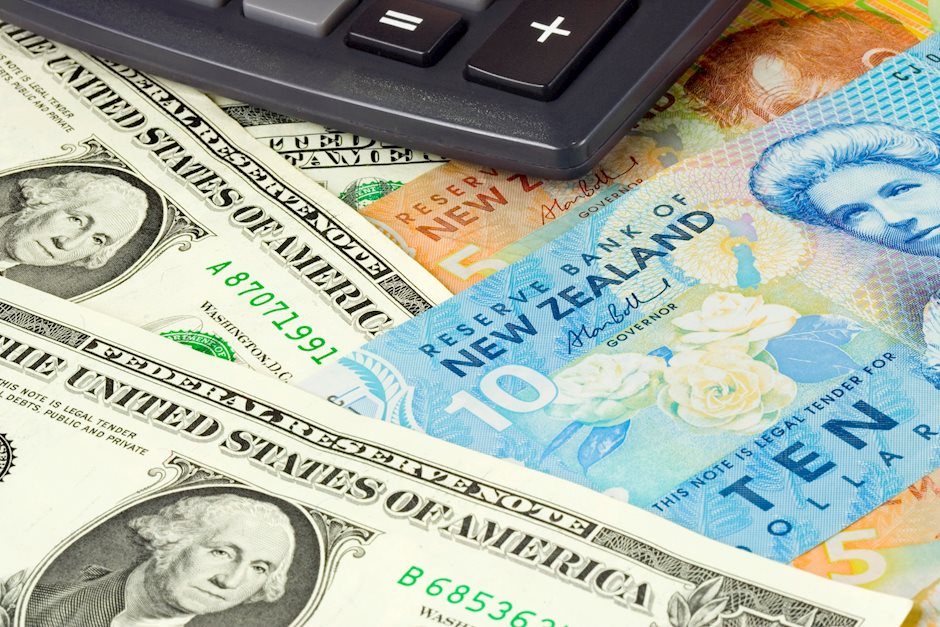NZD/USD sticks to gains near mid-0.6100s, remains below two-month high ahead of Fed’s Powell
- NZD/USD attracts some dip-buying on Friday amid the dovish Fed-inspired USD weakness.
- The disappointing release of New Zealand Retail Sales data does little to hinder the move up.
- Traders now look forward to Fed Chair Powell’s speech before placing fresh directional bets.

The NZD/USD pair regains some positive traction on Friday, albeit lacks follow-through and remains confined in a three-day-old range through the early European session. Spot prices currently trade around mid-0.6100s, well within the striking distance of over a two-month peak touched on Wednesday, as traders now look to Federal Reserve (Fed) Chair Jerome Powell's speech for a fresh impetus.
Powell's remarks will be scrutinized for cues about the US central bank's policy path and whether a cooling labor market could force the Fed to announce a larger-than-normal, 50 basis points (bps) rate cut in September. The expectations were fueled by data released on Wednesday, which showed that US employers added 818K fewer jobs than reported during the year through March. Hence, the outlook will play a key role in influencing the near-term US Dollar (USD) price dynamics and determining the next leg of a directional move for the NZD/USD pair.
In the meantime, growing acceptance that the Fed will begin its policy easing cycle next month and lower borrowing costs by 100 bps by the end of this year fails to assist the USD to capitalize on the overnight recovery from the YTD low. This helps offset weaker New Zealand data, showing that Retail Sales declined more-than-expected, by 1.2% QoQ in the second quarter as compared to a 0.5% increase in the previous quarter and acts as a tailwind for the NZD/USD pair. That said, a combination of factors might cap further gains for the currency pair.
Against the backdrop of China's economic woes, renewed fears of a potential recession in the US tempers investors' appetite for riskier assets and might act as a headwind for the risk-sensitive Kiwi. This, along with the Reserve Bank of New Zealand's (RBNZ) surprise rate cut earlier this month and a dovish tilt, indicating more cuts over the coming months, might hold back traders from placing aggressive bullish bets around the NZD/USD pair. Nevertheless, spot prices remain on track to register strong gains for the fourth successive week.
US Dollar FAQs
The US Dollar (USD) is the official currency of the United States of America, and the ‘de facto’ currency of a significant number of other countries where it is found in circulation alongside local notes. It is the most heavily traded currency in the world, accounting for over 88% of all global foreign exchange turnover, or an average of $6.6 trillion in transactions per day, according to data from 2022. Following the second world war, the USD took over from the British Pound as the world’s reserve currency. For most of its history, the US Dollar was backed by Gold, until the Bretton Woods Agreement in 1971 when the Gold Standard went away.
The most important single factor impacting on the value of the US Dollar is monetary policy, which is shaped by the Federal Reserve (Fed). The Fed has two mandates: to achieve price stability (control inflation) and foster full employment. Its primary tool to achieve these two goals is by adjusting interest rates. When prices are rising too quickly and inflation is above the Fed’s 2% target, the Fed will raise rates, which helps the USD value. When inflation falls below 2% or the Unemployment Rate is too high, the Fed may lower interest rates, which weighs on the Greenback.
In extreme situations, the Federal Reserve can also print more Dollars and enact quantitative easing (QE). QE is the process by which the Fed substantially increases the flow of credit in a stuck financial system. It is a non-standard policy measure used when credit has dried up because banks will not lend to each other (out of the fear of counterparty default). It is a last resort when simply lowering interest rates is unlikely to achieve the necessary result. It was the Fed’s weapon of choice to combat the credit crunch that occurred during the Great Financial Crisis in 2008. It involves the Fed printing more Dollars and using them to buy US government bonds predominantly from financial institutions. QE usually leads to a weaker US Dollar.
Quantitative tightening (QT) is the reverse process whereby the Federal Reserve stops buying bonds from financial institutions and does not reinvest the principal from the bonds it holds maturing in new purchases. It is usually positive for the US Dollar.
Author

Haresh Menghani
FXStreet
Haresh Menghani is a detail-oriented professional with 10+ years of extensive experience in analysing the global financial markets.
















